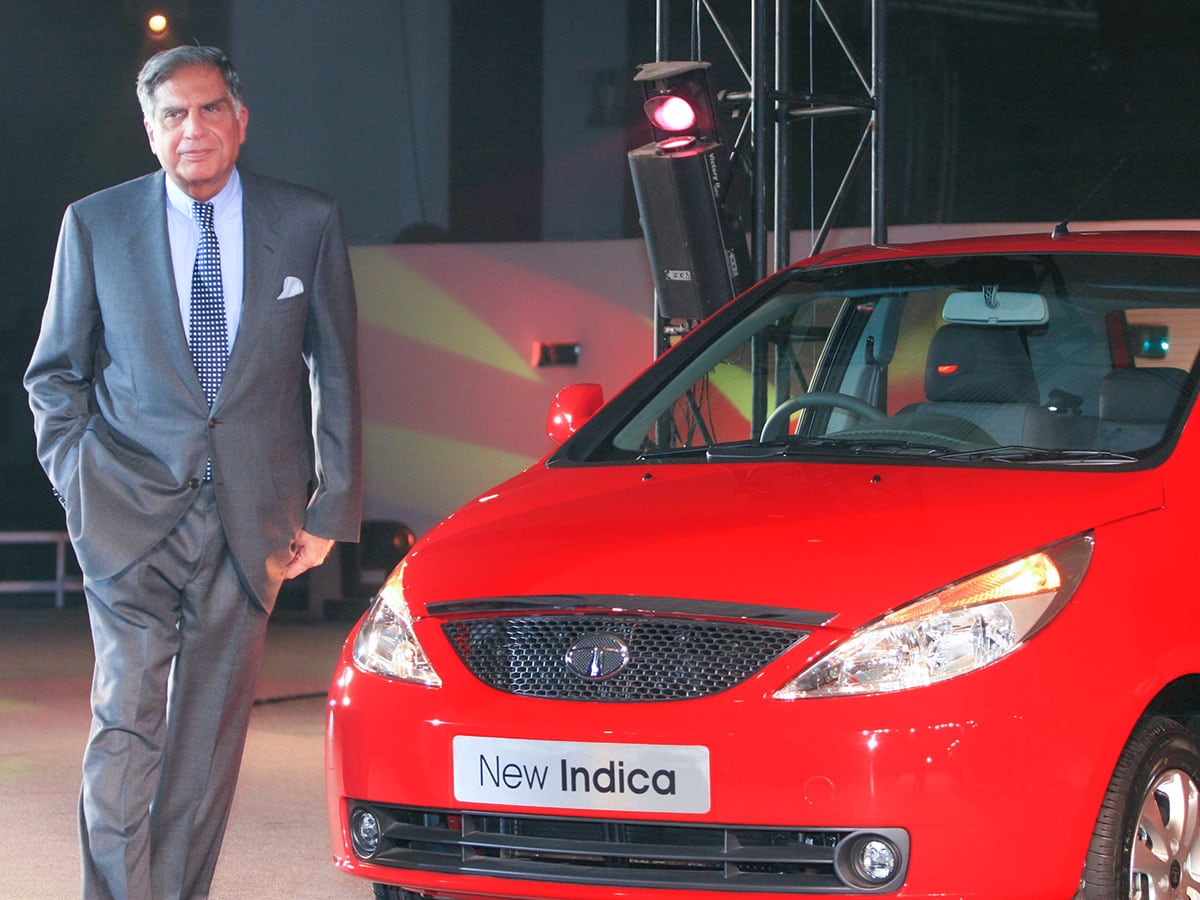 (File) Tata Company Chairman Ratan Tata during the launch of New Indica at the 9th Auto Expo in New Delhi, on Wednesday. JANUARY 9, 2008(Photo by Sonu Mehta/Hindustan Times via Getty images)
(File) Tata Company Chairman Ratan Tata during the launch of New Indica at the 9th Auto Expo in New Delhi, on Wednesday. JANUARY 9, 2008(Photo by Sonu Mehta/Hindustan Times via Getty images)
‘His Approach Was Unassuming and Disarming’
By Jayant Sankrityayana
It is difficult to recollect dates and times with any degree of precision regarding Tata’s involvement with design at Tata Motors from 1991 to 2012. I had several meetings with him through this period, so it would be best to write down, in general terms and in no particular order, my impressions of him as a leader and a design guide.
I first met him back in 1991. I was fresh out of the National Institute of Design, making a design presentation to him with a degree of terror and trepidation. Back then, he would review the work of our small team often and without any intermediate filtering. He always had constructive and detailed feedback to offer, with his deep interest in automobiles and a clear awareness of what was state-of-the-art then in global personal mobility. At that time, India was just entering liberalisation and the number of car models on sale in this country was only a small handful, which meant that us designers were on a steep, if fun, learning curve in any case.
Over those early years, we interacted over our design projects. He was always unambiguous and completely honest about his viewpoints. If something was not working for him, he would speak his mind. But if he found something to appreciate, he would ensure he voiced it even for the most junior person in the room. This was the time before he really became a celebrated household name, and the larger-than-life aura lay many years in the future. It was easy to speak with him, even argue with him, and his approach was unassuming, unostentatious and actually quite disarming.
My final meeting with Tata was back in 2019 when he visited the Tata Motors Design Studio in Pune and was given a viewing of the projects that we were working on at that time. He was now visibly elderly and had not been directly involved with the product portfolio for several years, but his comments remained incisive and relevant. He was also very cordial with the team and me, and remembered our previous interactions.
Now that he has passed on, I am reflecting on the impact he had on automobile design in India, with his persistent, even stubborn, conviction that Tata Motors could do its own thing and become world class while doing it. He entrusted that conviction in our nascent design team back then, demonstrating it with real investments, attention and opportunities. For me, personally, having started my career around the same time he began to propel design forward at our company, it was all a precious lifetime learning experience.
Jayant Sakrityayana is professor of practice with the UPES School of Design. In three decades with Tata Motors Design, he handled concept design and Alias modelling for several key passenger and commercial vehicle projects, moved into design program management, and eventually to the leadership of the India Studio. He was responsible for all the design outcomes from India, and worked in close cooperation with the global design team.
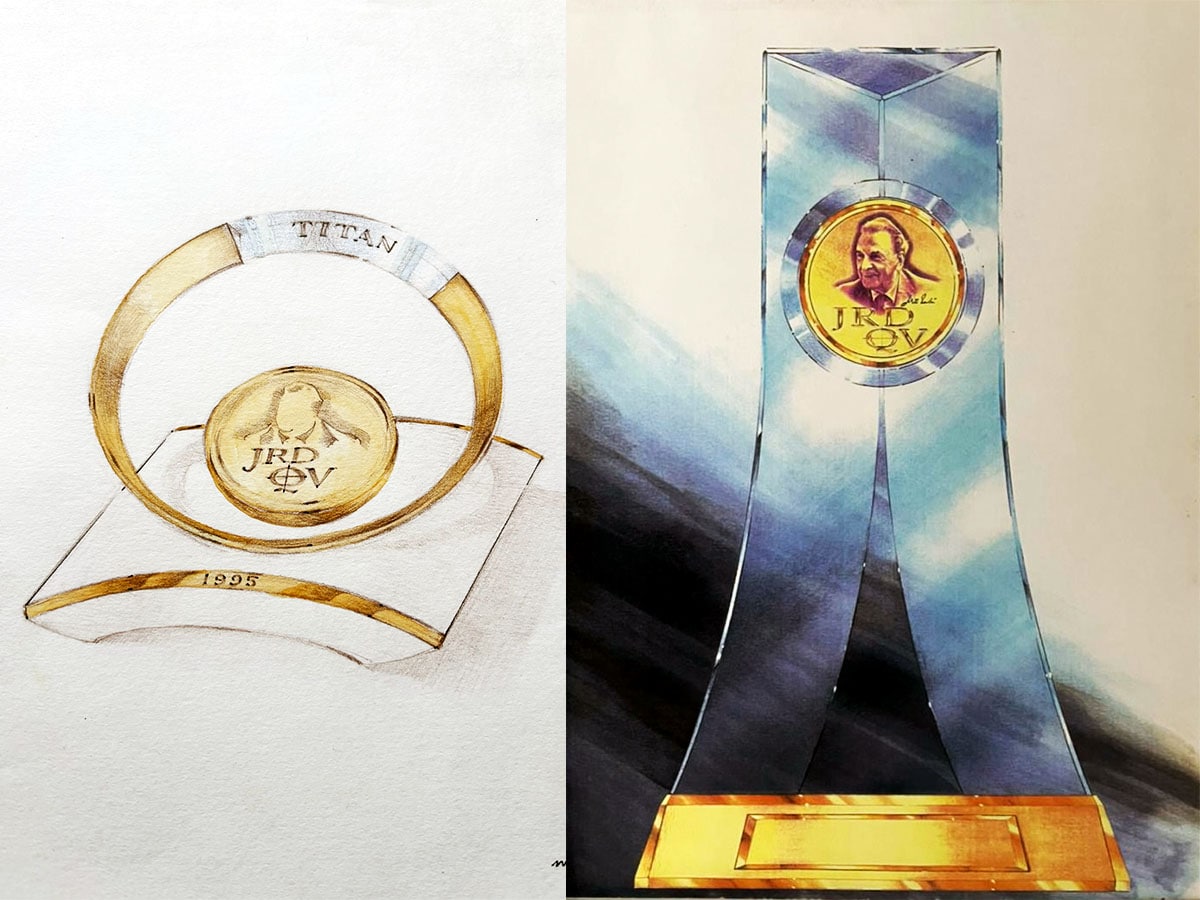 From left: JRDQV exploration; final concept JRD Tata Quality Value, an award given to Tata Group companies that excel in quality management and business excellence
From left: JRDQV exploration; final concept JRD Tata Quality Value, an award given to Tata Group companies that excel in quality management and business excellence
‘He Had An Eye For Detail’
By Michael Foley
I can still recall the early days of my employment in Titan, in the mid-90s, when as a young design graduate in my twenties, I was entrusted with creative projects that I would not have believed I could have done. The assignments involved creating Tanishq’s identity, working on Titan Edge, to name a few. The reason I was able to even attempt these was primarily guidance and trust from individuals with far more experience and wisdom, from whom I could learn enormously.
Some of these creative endeavours led to my interactions with Ratan Tata. I remember accompanying Xerxes Desai, the then MD of Titan Company, to Tata’s office for a briefing on the design of the JRD QV trophy, the highest award in the group for business excellence. The weight of it all was stressful at the beginning, but I instantly felt comfortable the moment Tata started sketching on a notepad to explain his thoughts behind what the trophy should be. He spoke of the never-ending pursuit for perfection and drew two opposing parabolic curves, echoing a continuous strive towards excellence. It took me two weeks of repetitive meetings, showcasing watercolour sketches of a range of trophy ideas, finally arriving at the one that we see today crafted in crystal embedded with a vermeil medallion graced with an engraving of JRD Tata’s bust. Tata had a fine eye for detail, a great sense of form and proportions, an affinity for typography, and was passionate about watches!
The impression I was always left with was that of awe and admiration for his wisdom, respect for the focussed attention he would give, and quite often fear that I may not come anywhere close to his expectations.
Michael Foley is founder, Foley Designs Private Limited and former chief creative advisor, Titan Industries
Also read: Ratan Tata: The common man’s carmaker
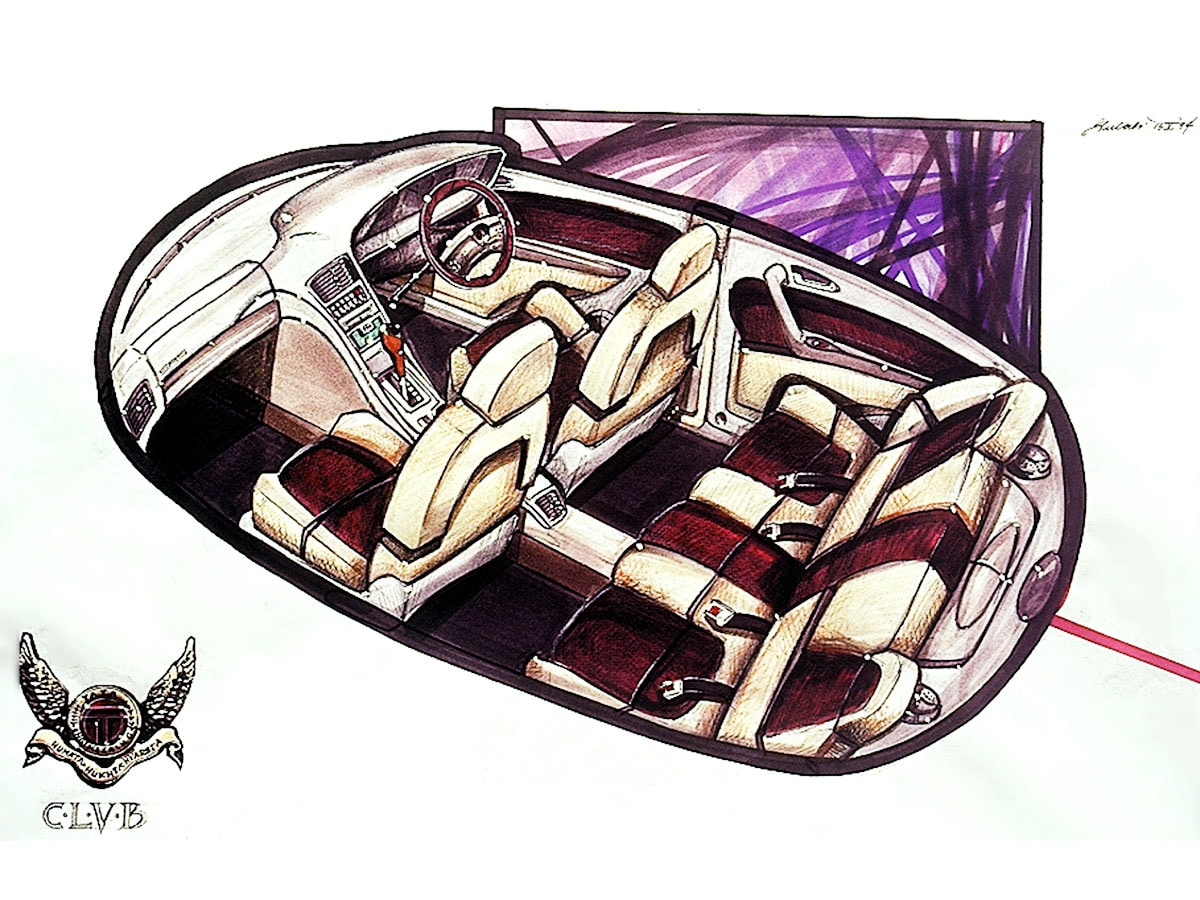 Explorations at Telco (now Tata Motors) 1994
Explorations at Telco (now Tata Motors) 1994
‘He Embedded Design into the DNA of the Tata Group’
By Amit Krishn Gulati
The news of Ratan Tata’s passing has triggered a wave of collective grief. His vision and drive had touched almost every Indian in some way through the “salt to software” empire he presided over for decades. In this era of swashbuckling founders riding unicorns, it is rare for a corporate titan to be remembered for gentler qualities such as grace, humility, generosity, and eloquence.
In the mid-1990s, as a car-crazy industrial design student at National Institute of Design, Ahmedabad, Telco (now Tata Motors) at Pune was probably the only place in India where one could experience a world-class automotive design studio. This was a temple of creativity where design was celebrated with sophisticated tools and cutting-edge CAD-CAM technologies. My joy was in overdrive when I landed the opportunity to work as a post-graduate trainee there.
Being at the Telco Styling Studio was akin landing on a futuristic island of excellence – a minimalist cuboid, Spartan on the outside with an ethereal glow. It had spacious halls with models of concept cars as focal elements, large boards with full-scale elevations of radical new silhouettes, and designers working on expansive, randomly oriented desks in different corners with an all-pervasive, silent intensity. The exclusive key card I was given on arrival was my ticket to heaven on Earth!
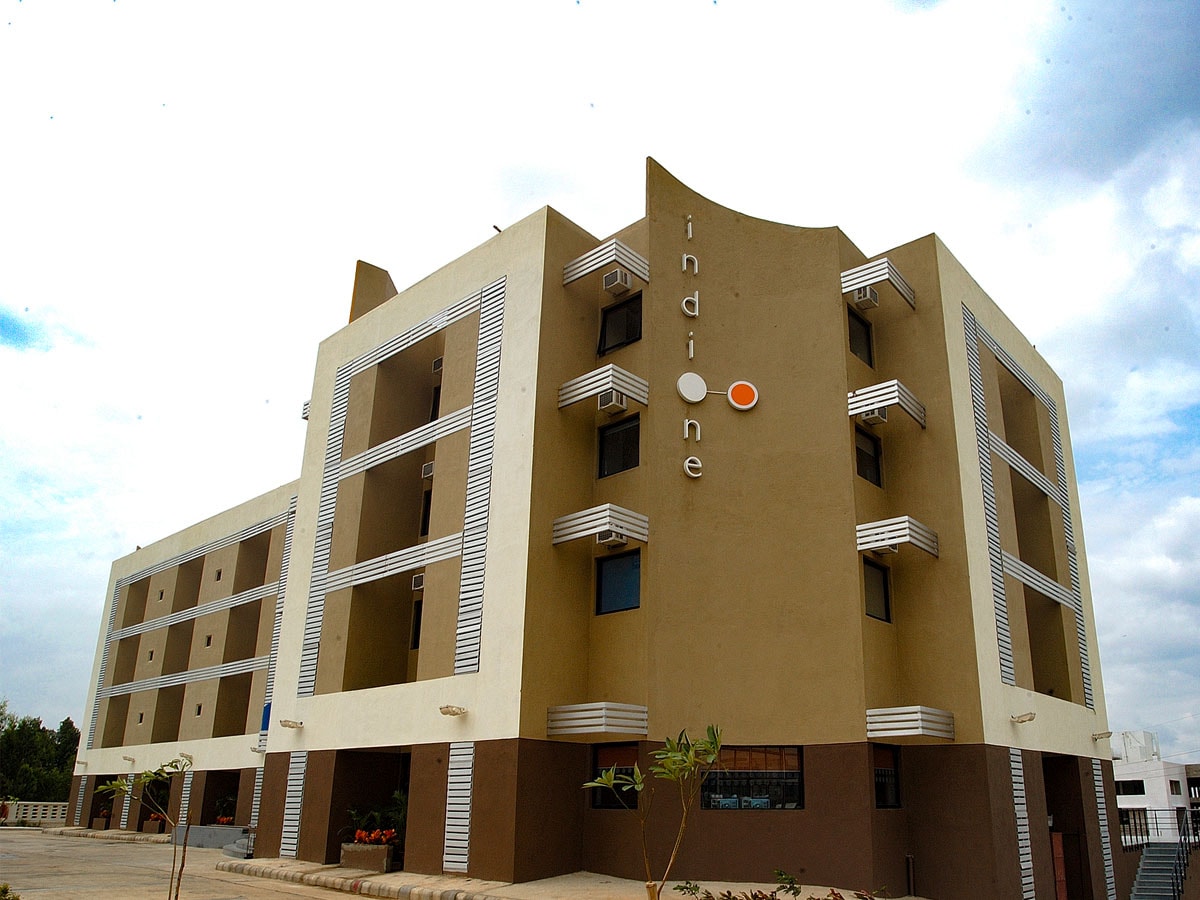 IndiOne (later called Ginger Hotels) – Smart Hotels concept for the Indian Hotels Company (Taj Group) 2004
IndiOne (later called Ginger Hotels) – Smart Hotels concept for the Indian Hotels Company (Taj Group) 2004
This magical, meditative place, bathed in white was the brainchild of Ratan Tata, a place where he crystal-gazed and imagined the future of Telco as a global challenger. The Tata Safari (a prescient SUV) and the Indica (Tata’s first compact passenger car) was shaped here and then technically resolved at the Telco Engineering Research Centre, or ERC. Even as a trainee, I had unlimited access to resources, receiving hands-on mentoring from the ERC patriarch NS Babu and my impressive seniors from NID, John Lucksom, and Jayant Sankrityayana. The storied values of nation-building, people orientation, lifelong learning, integrity, and being ahead of the curve which the Tata Group is known for came alive for me here. These values have remained guiding lights throughout my entrepreneurial journey.
The high point of my internship was when Ratan Tata visited to review the concept for a new mid-size car under development. This was a corporate theatre at its unforgettable best! Tata flew down, piloting a chopper himself, from where he was brought to the styling studio in a shiny, chauffeur-driven limousine. While he briskly inspected the models and drawings speaking in a low, authoritative tone with the ERC honchos, a small army of white-gloved uniformed butlers hovered around the studio discreetly, serving chilled orange juice and canapés.
I was asked to present my concepts for the car’s bodywork and interiors, which received curt yet insightful feedback from the man himself. He was deeply passionate about cars, was fully aware of the latest technologies, and viewed design as a powerful way to gain a competitive advantage…I was astonished at how someone at the helm of a behemoth could be so detail-oriented. It took me many years to realise this is an essential prerequisite for successful leadership.
The decade that followed was one of great transformation. India slowly started growing wings as our economy began to liberalise. The Tata group was becoming an ambitious global player. At the same time, the group’s commitment to the “bottom of the pyramid”, and the young and aspirational, was signaled through Tata’s passion projects such as the Nano and the Tata Swach water purifiers.
My next set of interactions with Tata occurred when Incubis, the design and innovation company co-founded with my brother, Rohit, was selected by the Taj group to be the architectural designer for Ginger. The vision for this project was to create an affordable, ‘smart’ hotel for the emerging Indian traveller that could scale swiftly. Being an architect himself, Tata appreciated the frugal modularity our concept embodied.
Tata had clearly embedded design into the DNA of the group with creativity and innovation as important ingredients in delivering differentiated products and memorable experiences to all.
Amit Krishn Gulati is founder and director, Incubis Consultants.
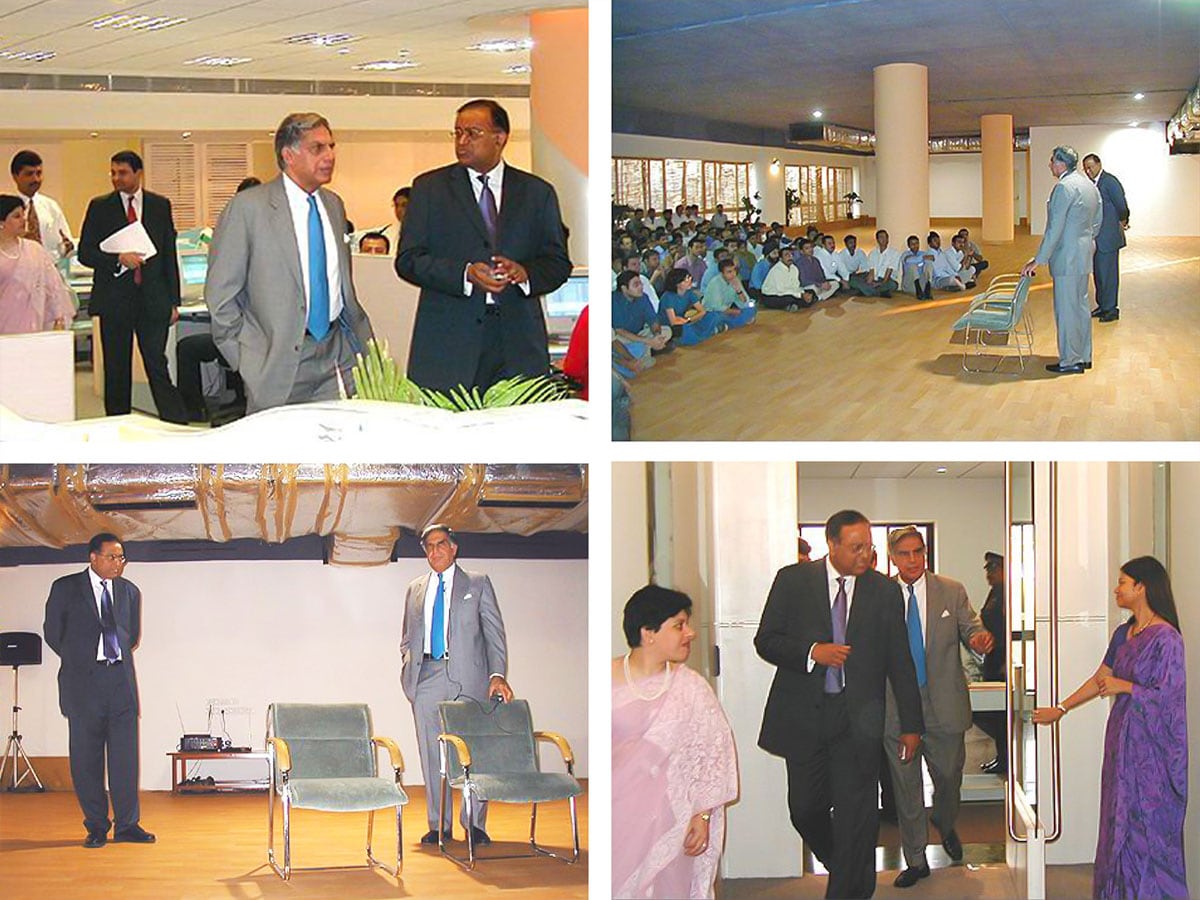 Ratan Tata at Tata Interactive Systems with CEO Sanjaya Sharma. Image: Durgesh Nadkarni
Ratan Tata at Tata Interactive Systems with CEO Sanjaya Sharma. Image: Durgesh Nadkarni
‘An Inspirational Leader, A Kind Human Being’
By Manisha Mohan
One celebrates Ratan Tata not only for his visionary leadership, but also as an ethical human being whose values and integrity transcended boardrooms. Beyond the corporate world, his deep kindness and compassion touched countless lives. His love for animals became a testament to the belief that every life deserves care and respect.
After graduating from the National Institute of Design (NID) in 1994, I spent over two decades in the Tata Group as the head of design and animation for Tata Interactive Systems, founded by our CEO, Sanjaya Sharma. We were lucky to have had Tata as the chairman of Tata group and Tata Sons up until 2012, and subsequently as part of the ecosystem of the Tata top leadership. Being under the leadership of visionaries like him, we were gradually indoctrinated into “The Tata Way”, which is pristine in its ethics, its sense of responsibility towards the society and the environment, its excellence in business practice, its pioneering nature, and the fact that it invested in people and enabled continuous learning.
I have a few personal memories of Tata that I have always cherished. I remember his visit to Tata Interactive Systems in December 2002. Among many words of wisdom for our entire organisation, I was thrilled with the brief interaction I had with him, in which he said that animation as a field could be a game-changer.
Tata believed in developing people, and as an employee, I was exposed to several training opportunities that helped me grow as an individual and professional. Especially the Tata Business Excellence Model, as a part of which, despite being a designer and animator, I was able to experience being a business assessor of other Tata Companies for many years.
Another inspiring moment was when he addressed the senior leadership of the group companies during an AGM [annual general meeting], where he talked about the possibilities of diversifying businesses towards the bottom of the pyramid and reaching the masses. He talked about the Tata Nano and Ginger Hotels, which were affordable solutions for the common man. He made a legendary speech while standing on the stage barefoot because of an injury. What struck me was his brilliance and yet his unassuming, humble nature.
Ratan Tata’s legacy is not just the towering businesses that he has built, but of his kindness, humility and the lives he uplifted. He paved the way for companies to combine profit with vision and compassion. Under his leadership, the Tata group built an ecosystem of people -friendly initiatives and policies. While he is no more with us in person, lessons from his life’s work will remain with us as guiding lights.
Manisha Mohan is dean-academics, Unitedworld Institute of Design, Karnavati University. She was chief design and innovation, Tata Interactive Systems, between 2008 and 2018
